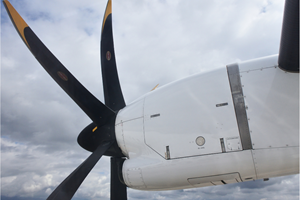Living in a much-changed composites world
In the composites world, change is good – and habitual.
I was on the road a fair amount in September, traveling to Novi, MI, for the SPE Automotive Composites Conference and Exhibition, to Chicago for IMTS and then to Anaheim for CAMX. Each event offered a nice glimpse of the many ways composite materials and technologies are meeting a variety of manufacturing challenges today. If you read this column regularly, you know that I have a sensitivity to the high level of activity in the composites industry and its proclivity for rapid change and adaptation. And I certainly saw much evidence of that during my travels.
However, it wasn’t until the end of my last day at CAMX that I came to a full appreciation of the path composites have traveled over the past two decades. On that day, I had an appointment with an exhibitor that manufactures curing ovens. I arrived at the company’s booth and met the marketing and communications person there, a gentleman I’d not met before. He told me that, indeed, he was relatively new to the industry. Or, rather, he was new to the composites industry as presently constituted.
As we talked more, he revealed that he’d previously worked for another composites industry supplier in the mid- to late-1990s, but he had subsequently left that employer and worked in other industries and markets until 2016, when he returned to composites with his current company.
The last composites-related tradeshow he’d attended for his previous employer was a SAMPE conference. “I don’t remember much about it,” he recalled, “except that it was small and focused almost entirely on composites in defense and sports cars.” CAMX was his first tradeshow in the new job, and, gazing around the exhibit hall, he could not believe the difference. “I look around at the composites industry now and . . . holy cow!”
Many of you reading this likely have no experience or memory of the composites industry that spans 20 years, so it is difficult to put its current state of the industry into context with the past. And even if you have 20 years or more of experience, the gradual nature of change likely makes thoughtful retrospection an “I remember when” rarity. But, if we think about my new friend at CAMX and what he “missed” in his almost 20 years away from composites,
it is daunting. He missed: Composites breaking into commercial aerospace in a big way with the 787 and A350. The development of the F-35 jet fighter, the military’s largest consumer of composite materials today. The wind energy boom that fueled unprecedented use of composite materials in wind blades. The closed molding revolution, which is fast putting open molding in the rearview mirror. The application of carbon fiber in sporting goods, ranging from golf clubs to hockey sticks to tennis rackets. And a dizzying array of mergers and acquisitions. In short, he missed a lot, and he returned just in time to witness firsthand how composites will move into high-volume automotive production.
These megatrends have been launched by different people and companies for the reasons we always list when we talk about composites: High strength, light weight, durability, corrosion resistance, etc. But we often overlook the fact that these mega- trends are only possible because the composites industry is what I call chronically dynamic — full of people not just comfortable with change, but obsessed with it, willing to tinker and try and poke and prod and fiddle and tweak to solve a problem or meet a challenge. This is engendered, in part, by the dynamic nature of composites themselves, the products of almost infinite resin, fiber, tooling and processing variations, which makes tinkering so easy and tempting.
The big question we face now is this: What will our chronic dynamism produce over the next 20 years? This is difficult to contemplate because understanding where we’re headed requires impossible-to-come-by knowledge of the disruptive technologies the future might have in store. A good starting point might be this simple statement: The application of composite materials has, over the past two decades, gotten easier, faster and less expensive, and it will only become more so in the two decades to come.
So, don’t go anywhere, but if you do, be prepared to come back to a much-changed composites world.
Related Content
CompositesWorld is on the road again
Since CW’s infancy, its editors have strived to imbue its coverage with a sense of place, whether that’s through plant tours, facility visits or trade shows. After a pandemic, this has never seemed more important.
Read MoreWhat to make of the first JEC World in three years
CW went to JEC World 2022 not sure what to expect. We were pleasantly surprised, and learned much about where and how new composites technologies are being developed.
Read MoreHow composites have become a necessity
Composites used to be one of many material options across industries and applications, but that's not the case anymore.
Read MoreWe're going to need a lot of propeller blades
As advanced air mobility expands and annual shipsets get into the thousands, the demand for composite propeller blades is expected to skyrocket. What are the implications for the composites supply chain?
Read MoreRead Next
From the CW Archives: The tale of the thermoplastic cryotank
In 2006, guest columnist Bob Hartunian related the story of his efforts two decades prior, while at McDonnell Douglas, to develop a thermoplastic composite crytank for hydrogen storage. He learned a lot of lessons.
Read MoreCW’s 2024 Top Shops survey offers new approach to benchmarking
Respondents that complete the survey by April 30, 2024, have the chance to be recognized as an honoree.
Read MoreComposites end markets: Energy (2024)
Composites are used widely in oil/gas, wind and other renewable energy applications. Despite market challenges, growth potential and innovation for composites continue.
Read More















.jpg;maxWidth=300;quality=90)







